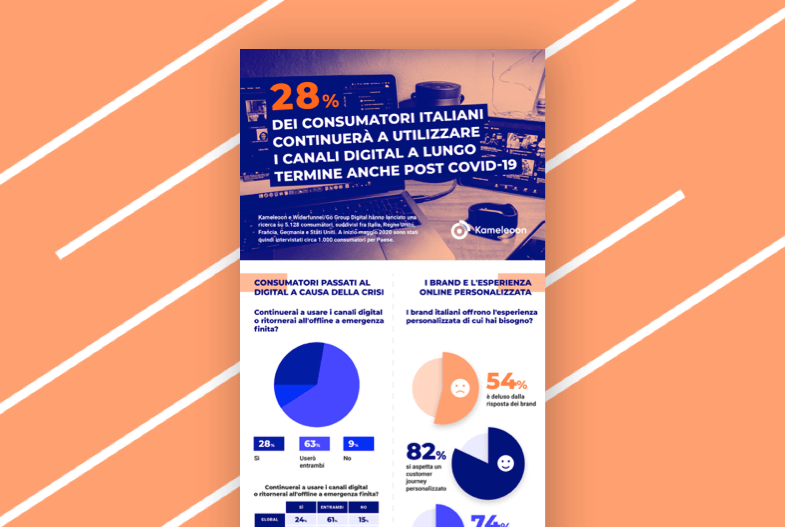The Impact of COVID-19 on Consumer Digital Behavior

How is COVID-19 impacting consumer digital trends – now and in the future? We asked consumers about how it is transforming their behavior and what it means for digital marketing strategies.
The research was commissioned with GO Group Digital, and involved 5,128 consumers, split between the United States, United Kingdom, France, Germany and Italy. Around 1,000 consumers were surveyed in each country at the beginning of May 2020.

On this page, you will find the overall results of the survey, a focus on each country, as well as best practice and takeaways to help brands adapt their digital strategies to meet current and future market needs.
2. Global Report
THRIVING AFTER THE CRISIS - How brands can build a digital strategy for future growth ?

Across the globe the COVID-19 pandemic and subsequent lockdowns have dramatically changed the everyday behavior of billions of people. It has had a particular impact on digital channels, with people switching to online given that many shops have been closed and consumers forced to stay at home.
What will the long-term impact be? Will people return to offline channels or has the crisis accelerated the move to digital? What does this mean for brands and their strategies, particularly around personalizing the online experience?
Analyzing the results we can see five clear conclusions.
- An immediate increase in use of digital channels after the COVID-19 crisis began
- Digital increases are here to stay after COVID-19 lockdowns end
- Brands are letting consumers down when it comes to a personalized experience
- The clear impact of the experience on future purchases
- The consumer benefits of switching to digital
READ MORE →
24%
of consumers will increase long-term use of digital channels due to
COVID-19
73%
of consumers expect brands to personalize their journey
DOWNLOAD THE GLOBAL INFOGRAPHIC →
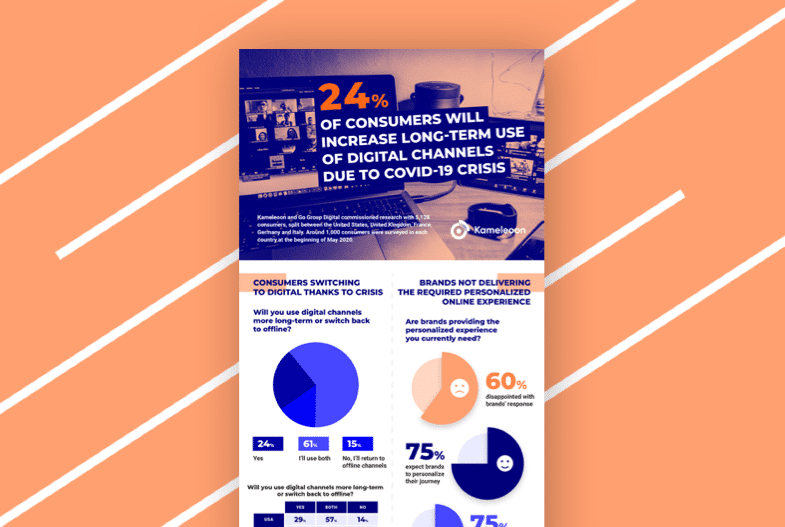
3. How to adapt experimentation strategies in the Covid-19 era & beyond
Why testing and personalization are key to meeting changing consumer needs during COVID
With the aid of best practice examples, this article explains how brands can react digitally and adapt to current and future conditions. It outlines the importance of testing and personalization to tuning digital strategy and actions as the crisis unfolds.
- What are the lessons for e-commerce during the COVID crisis?
- How can you adapt your digital experience to changing needs?
- Where should brands start testing?
- How AI-driven personalization helps to understand your visitors’ new habits
Accelerating business success post-lockdown with AI-driven personalization
While the situation remains fluid, lockdowns are being lifted in many US states and relaxed in multiple countries around the world.
Clearly, remaining alert and vigilant is vital. At the same time the relaxation enables brands across multiple sectors to increase their activities and offer experiences that are adapted to the new normal while boosting conversions and revenues.
This article outlines some key use cases for the current scenario, for brands in different sectors.
Helpful insights
Find out more about using experimentation to transform your current digital strategy by checking out these best practice blog posts from industry leaders:
- Increasing sales during a pandemic using behavioural science by Conversion
- Marketing and growth lessons for uncertain times by ConversionXL
- CRO in the time of Covid-19 by Elise Maile
The current COVID-19 crisis is driving long-term changes in how US consumers buy and interact with brands – and they are not happy with the level of personalization and reassurance delivered online by most companies, according to our study of 1,000 US consumers…
61%
of US consumers are disappointed by brands' online response and lack of personalization, impacting future spend
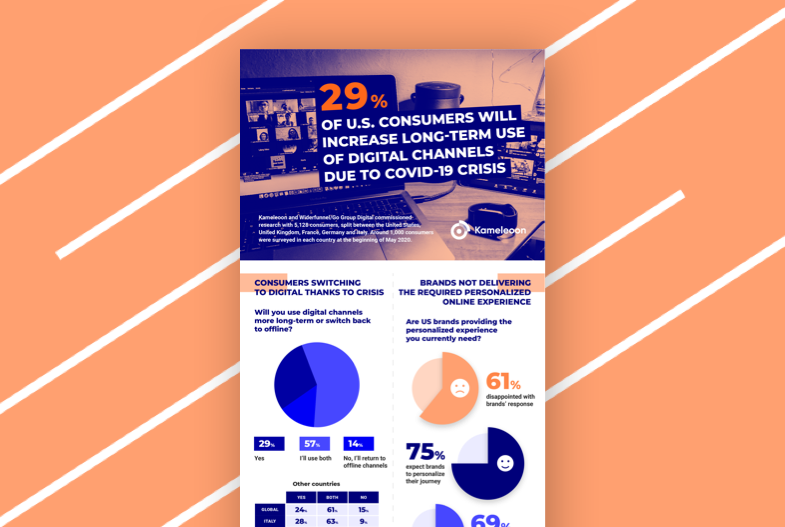
REPLAY
Shopper Behavior Has Changed: Making Experimentation Work in the COVID-19 Era and Beyond

Widerfunnel and Kameleoon present the results of a global survey on post-COVID consumer behavior and changing client experimentation strategies
UK consumer behavior is being reshaped by the current COVID crisis, with over a quarter of people saying they’ll do more activities digitally long-term. Yet, despite the opportunity for brands to increase digital revenues, 59% of consumers are not happy with the level of personalization and reassurance delivered online by most companies. 50% say they’ll switch or spend less with such brands.
73%
of UK consumers say the current COVID-19 online experience will change future spending
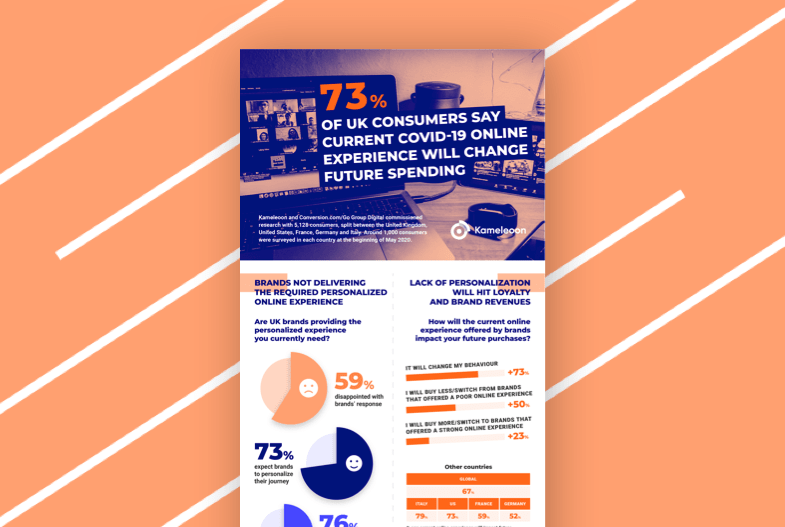
REPLAY
The long-term impact of COVID-19 on digital behaviour - Why it changes your experimentation strategy

Conversion and Kameleoon present the results our in-depth research findings and explain the importance of experimentation best practice to digital success in the time of COVID-19 and beyond.
The pandemic and lockdowns have changed digital French consumer behavior for the long-term, rather than just for the length of the crisis. Nearly a quarter (22%) of French people said they’d do more on digital channels when lockdowns were relaxed.
24%
of French consumers said they didn’t see any brands making an effort to personalize the experience, against 11% in the US
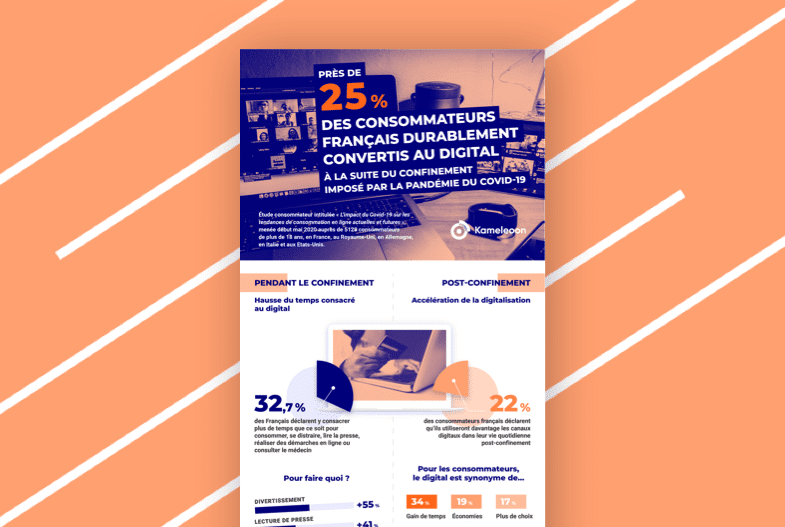
REPLAY
The long-term impact of COVID-19 on digital behavior (FR)

Converteo and Kameleoon present the key french findings of our in-depth research and analyze impact on digital marketing and conversion optimization strategies.
In Germany, digitalization has not been as strong as in other countries, due to a less restrictive lockdown, when consumers spent just 24% more time online. This trend continues post-lockdown - only 16% of Germans plan to use online channels more frequently, significantly below the rates in other countries.
16%
of German consumers say the current COVID-19 online experience will change future spending
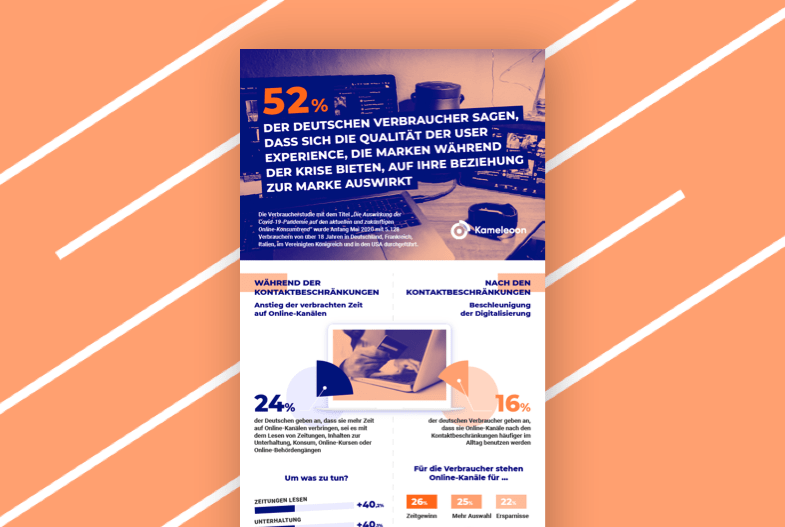
In Italy, heavily impacted by the COVID-19 pandemic and a comprehensive lockdown, 28% of consumers say they will increase their long-term use of digital channels. However, 58% are disappointed by the online response from brands and a lack of personalization, impacting future spend.
43%
of Italians are doing more online, compared to a study average of 32%
